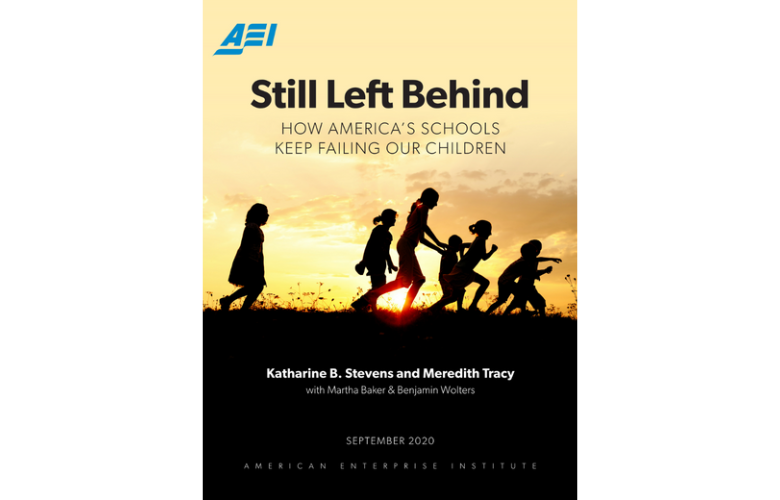Schools Won’t Work Any Better for Disadvantaged Children After COVID Than Before It
By Katharine B. Stevens
BLOG
December 21, 2020
Last week I participated in a National Press Foundation briefing, “Closing the COVID Inequality Gap,” convened to examine the impact of widespread school shutdowns on disadvantaged children. My co-panelists, Julia Kaufman from RAND and Bryan Hancock from McKinsey, presented recent research illuminating how bad that impact likely to be. This is a disaster on top of a disaster. An interactive map I’ve just published on the state-by-state performance of public schools shows that large proportions of disadvantaged children were already so far behind before COVID they could never catch up.
Kaufman highlighted key findings from an October 2020 survey of teachers and principals, showing “an alarming picture of how the 2020–2021 school year is unfolding.” The survey found that higher-poverty schools (at least 75 percent of students eligible for free and reduced-price lunch) and higher-minority schools (at least 75 percent non-white students) were most likely to be closed: 56 percent and 63 percent, respectively, were online-only, compared to just 33 percent of schools overall. Yet principals of higher-poverty schools reported that one out of five students did not have adequate internet access at home, meaning some children are cut off from school entirely.
Across the board, teachers said they’d been unable to contact 20 percent of their students. Most teachers (56 percent) said they’d covered half or less of the curriculum content they’d covered over the same period last year. Teachers in higher-poverty schools reported that only 61 percent of students, on average, had completed most or all of their assignments. Four in 10 remote teachers said they had a “major” or “very major” need for strategies to help their students catch up to grade level.
The picture Kaufman presented was consistent with Hancock’s new analysis of COVID’s impact, using fall assessment data reported by Curriculum Associates. At the beginning of the school year, students had lost an average of three months of learning in mathematics and one-and-a-half months in reading, with worse losses for disadvantaged children. Projecting forward, Hancock and his colleagues concluded that “cumulative learning loss could be substantial,” especially in math and for poor students and students of color: Those children may be as much as 11 to 12 months behind in math by June 2021, compared to where they would have been.
And that’s disastrous because “where they would have been” was pretty terrible to start with. My interactive map provides state-level data on percentages of lower-income eighth-graders who scored below the lowest level of Basic in reading and math on the 2019 National Assessment of Education Progress (NAEP). As the map shows, more than one-third of lower-income eighth-graders could not demonstrate even minimum competence in reading and math in every one of the 50 states and the District of Columbia. The achievement gap between lower-income and higher-income eighth-graders was huge across the board.
In reading, the percentage of eighth-graders scoring below NAEP Basic ranged from 33 percent (Idaho) to 52 percent (DC). In math, it ranged from 36 percent (Wyoming) to 59 percent (Alabama). In 25 states and DC, at least 40 percent of lower-income eighth-graders scored below Basic in reading. In 11 states and DC, half or more scored below Basic in math. Achievement gaps between percentages of higher- and lower-income students scoring below Basic were in double digits, ranging from 14 to 37 points across states. As the map also shows, state-level 2016 spending per student ranged widely — from $7,748 to $20,590 (in 2019 dollars, adjusted for state cost of living) — correlating little with either achievement or gaps.
How can the same schools that failed these children so badly before COVID help them catch up afterwards? The answer is: They can’t. In fact, despite massive public investment — now totaling over $700 billion per year — schools have been failing disadvantaged children for a long time. We need good schools now more than ever. But it’s hard to see how they’ll be any better after COVID than they’ve been for decades before it.
See Also
Report ~ September 21, 2020
Op-Ed ~ January 6, 2021
Event ~ October 29, 2020




